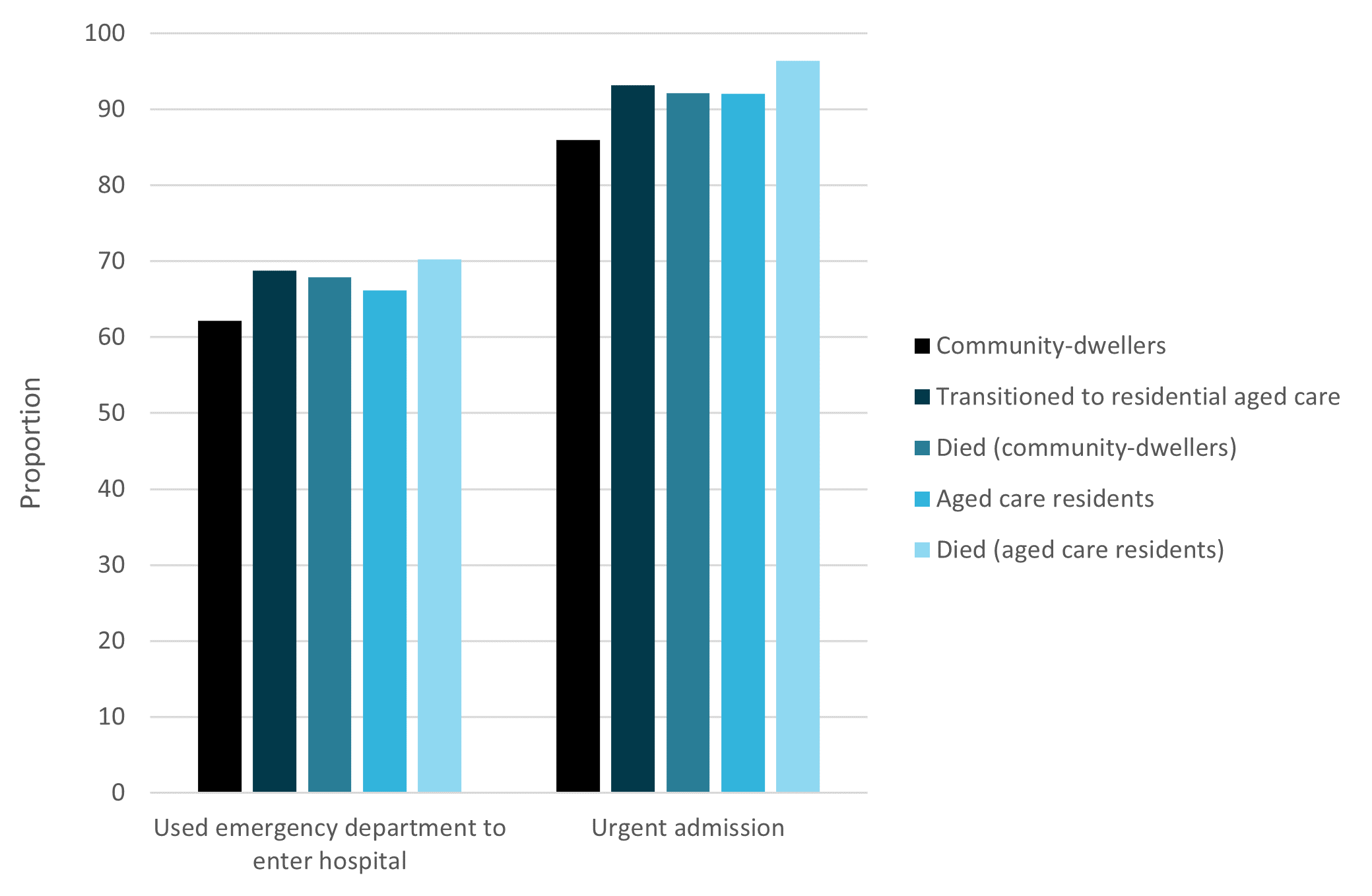Emergency admissions
Almost two in three people living with dementia (65%) used the emergency department to enter their first hospitalisation, and during their hospitalisation most people were categorised as having an urgent or “emergency” admission (90%), rather than “elective”, meaning treatment could not be delayed by 24 hours due to serious risk of illness of death.
Community-dwellers were less likely to enter the emergency department (62%) or to have an urgent admission (86%) compared with aged care residents, people who then transitioned into residential aged care and people who died during their hospitalisation or within 7-days (for each group, over 66% entered the emergency department and over 92% had an urgent admission) (Table S1.6 and Table S1.7).
Figure 6 Use of the emergency department to enter hospital and urgency of admission for people living with dementia

Source: AIHW NIHSI 2018–19, analysis of NIHSI.


